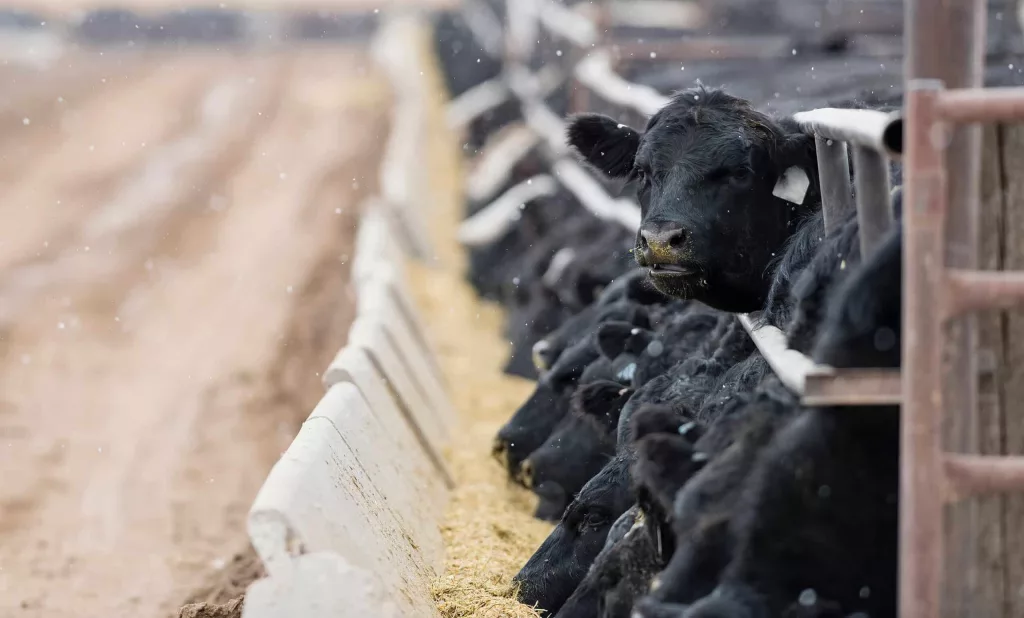(Washington, D.C., May 11, 2025) – U.S. Secretary of Agriculture Brooke L. Rollins today announced the suspension of live cattle, horse, and bison imports through U.S. ports of entry along the southern border due to the continued and rapid northward spread of New World Screwworm (NWS) in Mexico, effective immediately. NWS has been recently detected in remote farms with minimal cattle movement as far north as Oaxaca and Veracruz, about 700 miles away from the U.S. border.
The United States and Mexico continue efforts to interdict and eradicate NWS in Mexico and work in good faith. However, despite these efforts and the economic impact on both countries due to this action, there has been unacceptable northward advancement of NWS and additional action must be taken to slow the northern progression of this deadly parasitic fly. As such, effective immediately, the USDA Animal Plant Health Inspection Service (APHIS) in conjunction with Customs and Border Protection (CBP) will restrict the importation of live animal commodities originating from, or transiting Mexico. This import suspension will persist on a month-by-month basis, until a significant window of containment is achieved. USDA will continue constant collaboration with Mexico, including a review of latest data and metrics in two weeks. Our teams have been in daily communication discussing how we can build on the good work that has been accomplished to improve our strategy toward eradication. Any livestock currently in holding for entry into the United States will be processed normally, this includes an APHIS port Veterinary Medical Officer inspection exam and treatment to ensure they are not carrying NWS.
“The United States has ordered the suspension of livestock imports through ports of entry along our southern border after the continued spread of the New World Screwworm in Mexico. Secretary Berdegué and I have worked closely on the NWS response; however, it is my duty to take all steps within my control to protect the livestock industry in the United States from this devastating pest,” said Secretary Rollins. “The protection of our animals and safety of our nation’s food supply is a national security issue of the utmost importance. Once we see increased surveillance and eradication efforts, and the positive results of those actions, we remain committed to opening the border for livestock trade. This is not about politics or punishment of Mexico, rather it is about food and animal safety.”
Effective eradication, which remains our shared goal and best interest of both the U.S. and Mexico, requires a three-pronged approach: robust active field surveillance with education and outreach to ensure prevention, treatment, and early detection; controlled animal movement to limit spread; and sustained sterile insect dispersal. Suspending livestock transport through southern ports of entry will assist in the effort to limit northbound transport of NWS through livestock commerce, and will allow the U.S. to reassess whether current mitigation standards remain sufficient. It is important to note the northward spread of NWS is possible through natural wildlife movements, including wildlife that transit the border region without impediment.
USDA is taking all possible actions to monitor for, and limit, the northward movement of NWS, including the utilization of the USDA Tick Riders to monitor livestock and wildlife along the southern border region, between the ports of entry, for the presence of NWS.
National Cattlemen’s Beef Association (NCBA) announced support for the U.S. Department of Agriculture’s (USDA) decision to close the U.S. southern border to shipments of cattle, bison, and horses, due to the continued spread of New World screwworm beyond the phytosanitary border put in place to stop its advance.
“For months, NCBA and affiliated state cattle industry associations have been working with USDA officials urging their counterparts in Central America to take stronger action to stop the spread of New World screwworm. In the 1960s, America’s cattle and livestock producers spent years and millions of dollars to eradicate New World screwworm from the United States,” said NCBA CEO Colin Woodall.
The U.S. previously and successfully led the eradication of NWS in the U.S. and Mexico, however this cost billions of dollars and took decades. Unfortunately, these recent detections in Mexico show that this dangerous pest is back and remains a serious threat to the health of our animals, our food supply, and the security of our country.
BACKGROUND
- The first case of NWS in Mexico was reported to the U.S. in November 2024. When NWS fly larvae (maggots) burrow into the flesh of a living animal, they cause serious, often deadly damage to the animal. NWS can infest livestock, pets, wildlife, occasionally birds, and in rare cases, people.
- In November 2024, after a positive detection of NWS in southern Mexico, USDA shut down the border for live animal trade.
- In February 2025, USDA resumed imports after APHIS and Mexico agreed to and implemented a comprehensive pre-clearance inspection and treatment protocolto ensure safe movement and steps to mitigate the threat of NWS.
- Over the last two years, screwworm has spread north throughout Panama and into Costa Rica, Nicaragua, Honduras, Guatemala, El Salvador, Belize, and now Mexico.
- APHIS is releasing sterile flies through aerial and ground release at strategic locations, focusing on Southern Mexico and other areas throughout Central America. A complete list of regions APHIS recognizes as affected by NWS as well as more detailed information on trade restrictions can be found on the USDA APHIS Animal Health Status of Regions website.
